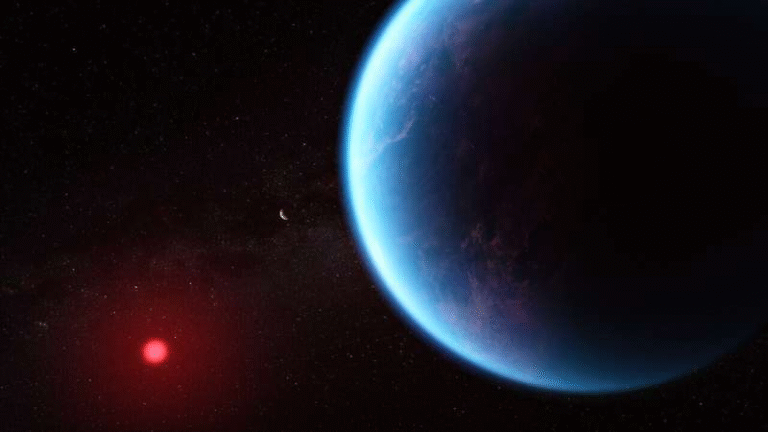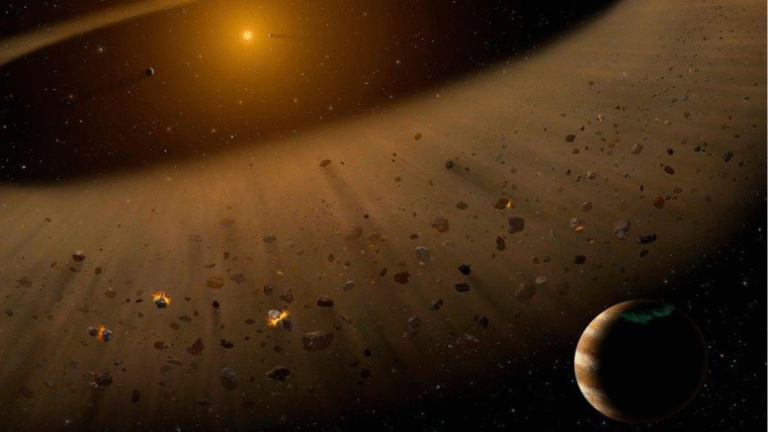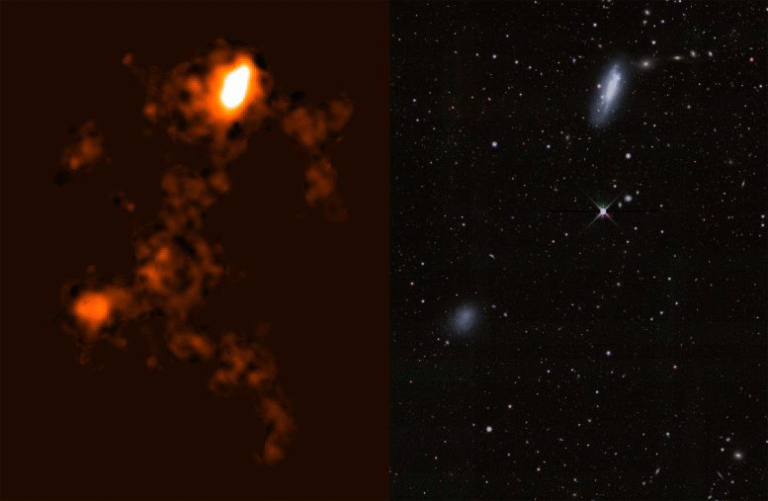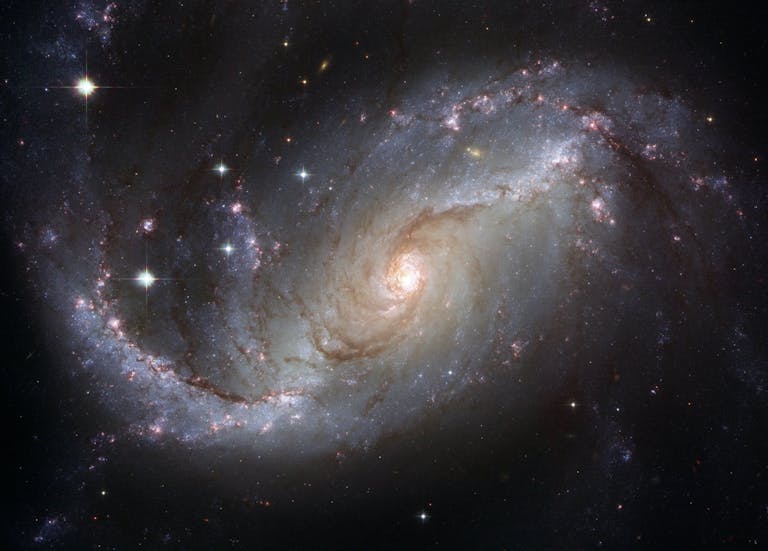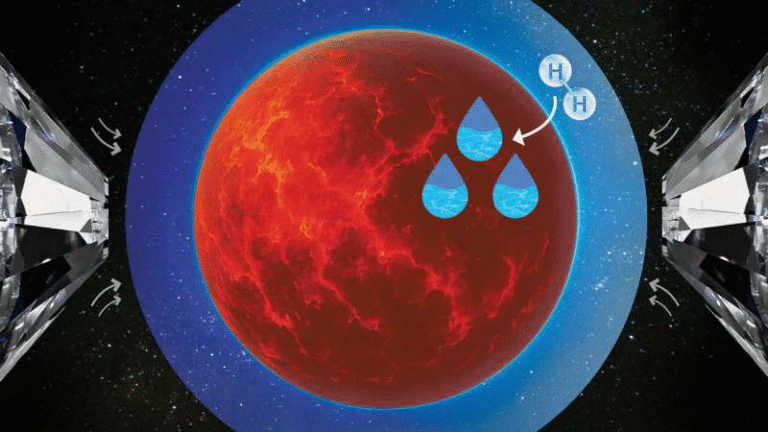Webb Telescope Reveals Strange Beads and Star Patterns in Saturn’s Atmosphere

The James Webb Space Telescope (JWST) has unveiled astonishing details about Saturn’s upper atmosphere, exposing structures that no scientist expected to see.
During an extensive observation session in late 2024, researchers detected dark bead-like formations in the planet’s ionosphere and a lopsided star-shaped pattern in the stratosphere.
These discoveries not only showcase the power of JWST’s instruments but also raise new questions about Saturn’s complex atmospheric dynamics.
The Discovery Session
The findings were the result of a 10-hour continuous observation of Saturn on November 29, 2024, when the gas giant rotated beneath the telescope’s gaze. An international team of 23 researchers from the UK, US, and France carried out the study, using JWST’s Near Infrared Spectrograph (NIRSpec) to measure faint emissions.
The instrument focused on two types of emissions:
- H₃⁺ ions in the ionosphere, located about 1,100 kilometers above Saturn’s nominal surface.
- Methane molecules in the stratosphere, found about 600 kilometers above Saturn’s surface.
This dual-layer observation allowed researchers to look at two very different regions of Saturn’s atmosphere at the same time — and the results were completely unexpected.
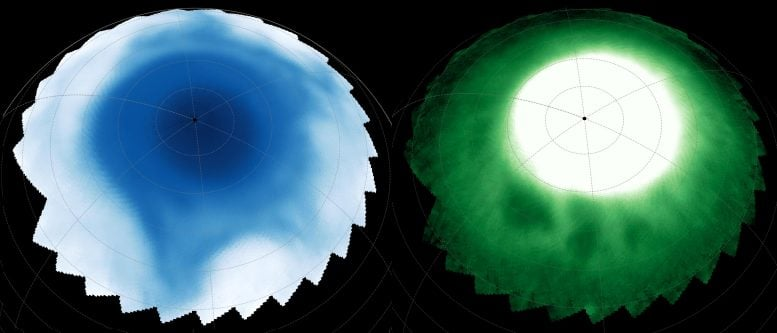
Dark Beads in the Ionosphere
At the highest observed level, Saturn’s ionosphere, the team discovered a series of dark bead-like structures embedded within glowing auroral halos. These beads:
- Were stable for hours at a time.
- Drifted slowly when tracked over longer periods.
- Stood out because the auroras around them were at least four times brighter than the dim beads themselves.
The appearance of these beads challenges our understanding of how auroras and charged particles behave in Saturn’s upper atmosphere. Normally, researchers expect broad, smooth emissions. Instead, JWST revealed fine-scale details resembling “dark spots” stitched into Saturn’s shimmering auroras.
A Star Pattern in the Stratosphere
Roughly 500 kilometers lower, in Saturn’s stratosphere, JWST detected something just as strange: a star-shaped pattern radiating from the north pole. The formation had six potential arms, but only four arms were visible, leaving two absent and creating a lopsided design.
The structure extended toward Saturn’s equator, suggesting that processes deeper in the planet’s atmosphere could influence higher layers. These arms were revealed through emissions from methane molecules, which gave JWST a new window into the stratosphere’s behavior.
The missing arms raise questions: Are they absent because of unique atmospheric processes, or is it simply that JWST couldn’t capture them during this observation? The mystery remains unsolved.

The Link to Saturn’s Hexagon
One of the most fascinating aspects of this discovery is the apparent alignment between the new features and Saturn’s iconic hexagonal storm. This hexagon, first seen by the Voyager mission in the 1980s and later studied by Cassini, sits at Saturn’s north pole in the deeper cloud layers.
The newly observed star arms in the stratosphere seem to emanate from the same positions as the vertices of the hexagon below, while the dark beads in the ionosphere align with the same region overhead.
This suggests a possible vertical coupling running through Saturn’s atmosphere — from deep storms in the lower atmosphere, through the stratosphere, all the way up to the ionosphere. If confirmed, this would mean that Saturn’s weather systems influence much higher altitudes than previously thought.
Why These Observations Are Important
Studying Saturn’s upper atmosphere has always been challenging. The emissions from these layers are extremely faint, making them difficult to capture with ground-based telescopes. Even space missions like Cassini were limited in what they could see.
JWST’s sensitivity in the infrared spectrum is what made these new detections possible. The ability to capture both H₃⁺ ions and methane emissions simultaneously gave researchers a unique opportunity to map multiple atmospheric layers and directly compare them.
This discovery is the first time such fine-scale structures have been observed in Saturn’s upper atmosphere. It demonstrates that gas giant atmospheres may be far more intricate than expected, and it could push scientists to rethink existing models.
Possible Explanations (Still Hypothetical)
At this stage, the team does not have definitive answers about what causes the beads or the lopsided star pattern. Some early hypotheses include:
- The dark beads could result from interactions between Saturn’s magnetosphere and its rotating upper atmosphere. These interactions may affect how energy is distributed during auroral activity.
- The star arms might be linked to atmospheric waves or circulation patterns that align with the hexagon storm system. The missing arms might suggest incomplete wave structures or uneven energy transfer.
Crucially, the fact that the beads and the strongest star arm appear to line up hints at a possible connection. Whether this is coincidence or evidence of a deeper process is not yet clear.
The Role of Seasonal Changes
Timing is an important factor here. Saturn was observed near its equinox, an event that occurs about once every 15 Earth years. During equinox, sunlight distribution shifts dramatically across the planet, leading to seasonal atmospheric changes.
Researchers believe that as Saturn moves toward autumn in its northern hemisphere, the newly discovered features might evolve or even disappear. This makes follow-up observations by JWST crucial, since no other telescope can observe these faint layers with such clarity.
The Broader Importance of H₃⁺ in Planetary Science
The study of H₃⁺ ions isn’t just important for Saturn. This ion is a key tracer in many planetary atmospheres:
- It forms in the ionospheres of giant planets when molecular hydrogen is bombarded with energetic particles or ultraviolet light.
- It plays a role in atmospheric cooling by radiating energy away in the infrared.
- Its emission lines provide a way to measure temperature and dynamics in otherwise hard-to-observe layers.
JWST’s ability to detect H₃⁺ in such detail on Saturn could lead to similar studies of Jupiter, Uranus, and Neptune, potentially unlocking hidden features in their atmospheres as well.
Saturn’s Hexagon: A Quick Refresher
Since the discoveries connect back to Saturn’s hexagon, it’s worth revisiting what makes this storm so unusual.
- It is a six-sided jet stream located around 78 degrees north latitude.
- Each side of the hexagon is about 14,500 kilometers long, longer than Earth’s diameter.
- The hexagon rotates with the planet and has persisted for decades, possibly centuries.
- Its exact cause remains debated, but it likely arises from atmospheric wave patterns in Saturn’s deep atmosphere.
The fact that the star arms and dark beads seem to “mirror” the hexagon suggests that the storm might influence the atmosphere far above it, across hundreds of kilometers.
The Research Team and Study Details
The study was led by Professor Tom Stallard of Northumbria University in the UK. He was joined by a team of 22 other scientists across multiple institutions, including specialists from the US and France.
Their findings were:
- Presented at the EPSC-DPS 2025 Joint Meeting in Helsinki.
- Published in Geophysical Research Letters on August 28, 2025 under the title:
“JWST/NIRSpec Detection of Complex Structures in Saturn’s Sub-Auroral Ionosphere and Stratosphere.” - Funded by organizations including the UK’s Science and Technology Facilities Council (STFC), NASA’s Solar System Workings program, and the European Research Council.
Why This Matters Beyond Saturn
While the discovery is specific to Saturn, the implications extend much further:
- It shows that giant planet atmospheres may contain hidden structures that remain undetected without advanced tools like JWST.
- It suggests that vertical coupling between deep weather systems and upper atmospheric layers might be a universal feature of gas giants.
- It emphasizes the importance of studying planets during different seasonal phases, since atmospheric dynamics can change dramatically.
Future missions to Saturn may be designed with these new features in mind, ensuring that instruments are capable of probing faint upper-atmospheric emissions.
What Comes Next
The research team hopes to secure additional JWST observation time to track Saturn’s atmospheric features as they evolve. Since these layers can’t be observed from Earth, JWST remains the only tool capable of following up.
Over the coming years, scientists will be watching for:
- Changes in the dark beads’ drift patterns.
- The possible appearance or disappearance of the missing star arms.
- Shifts in alignment with the hexagon as Saturn progresses through its seasonal cycle.
These observations could reveal whether the features are stable, temporary, or part of a larger repeating system.
Reference
Research paper: JWST/NIRSpec Detection of Complex Structures in Saturn’s Sub-Auroral Ionosphere and Stratosphere
